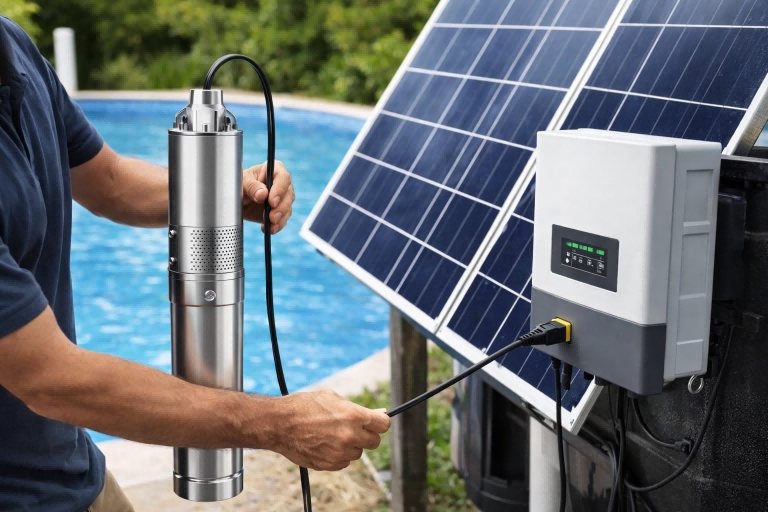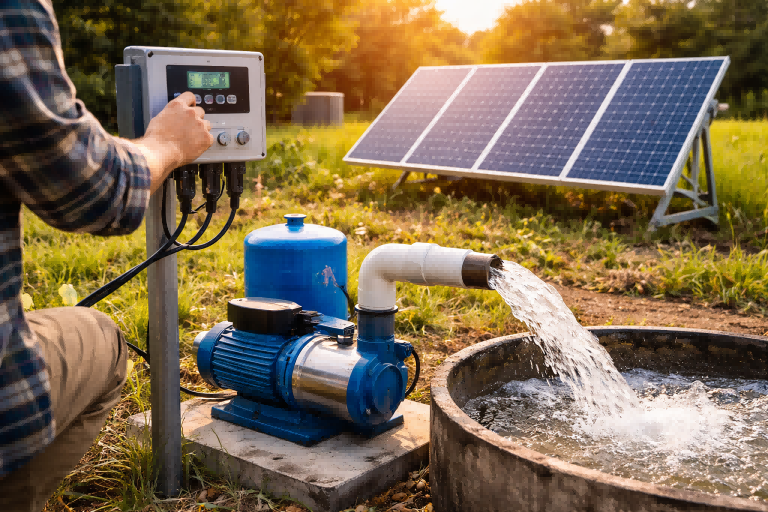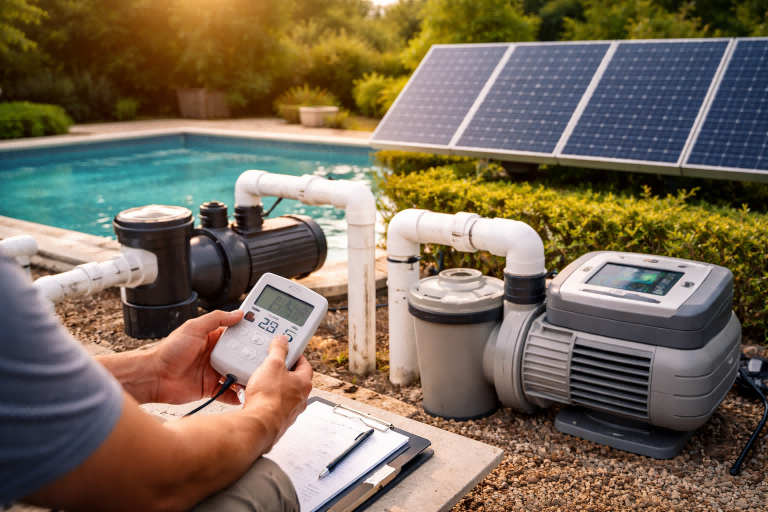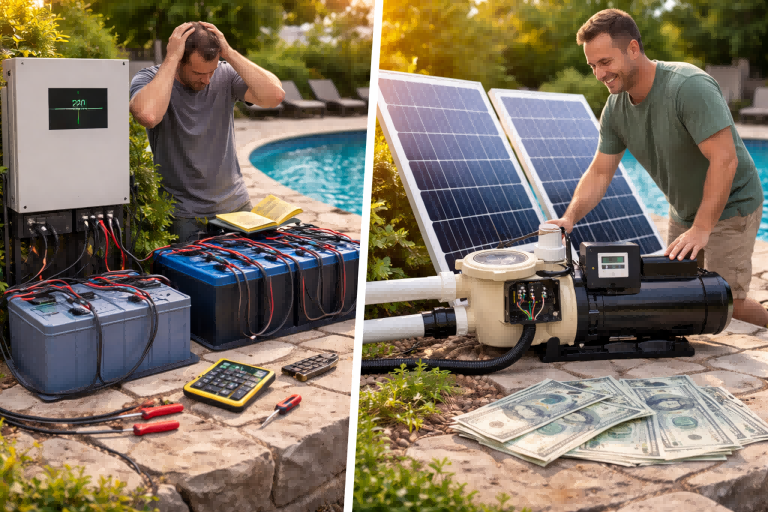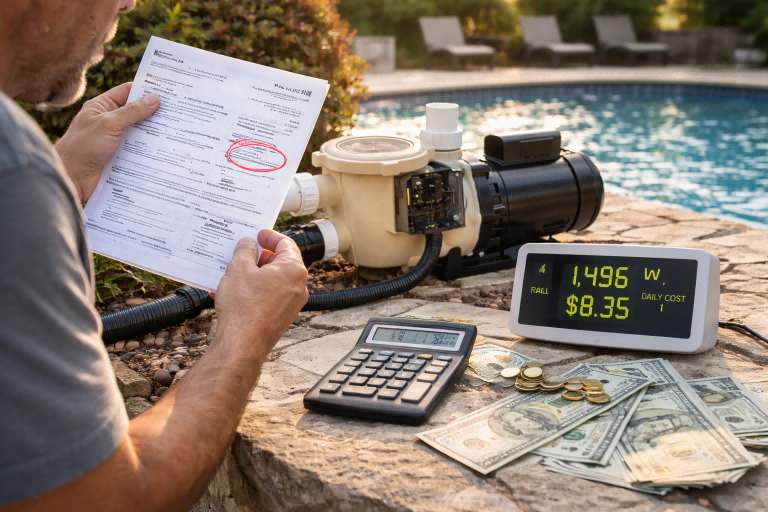Struggling with inconsistent water pressure in your buildings?
This leads to user complaints and high operational costs.
A proper water supply pump is the key to a reliable, efficient system.
A water supply pump is a mechanical device designed to increase water pressure and move water from a source to its point of use.
It ensures a steady and adequate flow for residential, commercial, and industrial applications, overcoming issues of low pressure or long-distance transport.
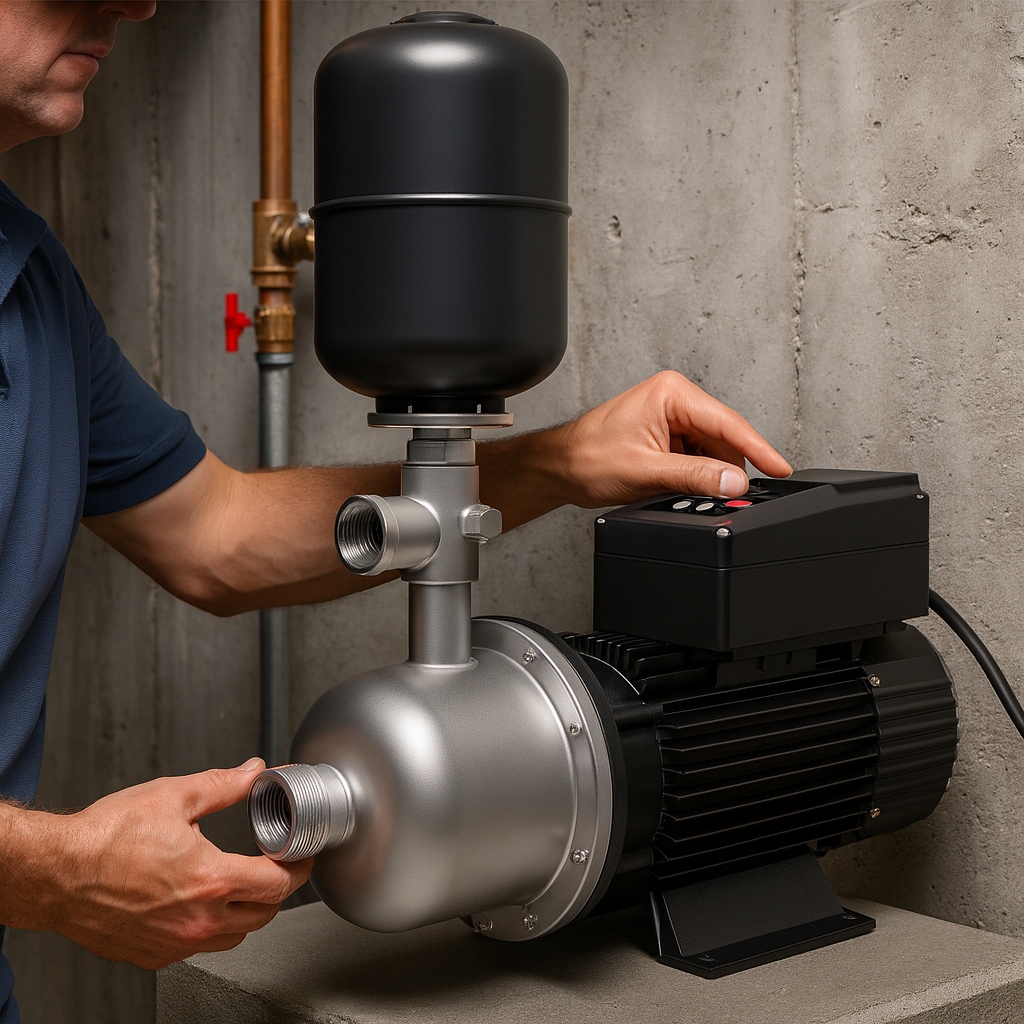
Understanding water supply pumps is crucial for any property manager or water system distributor.
These devices are the heart of a building's plumbing, responsible for everything from a satisfying shower to the proper functioning of industrial equipment.
Without them, multi-story buildings, sprawling complexes, and homes far from municipal lines would suffer from weak or non-existent water flow.
Let's explore how these essential devices work and what makes modern solutions so effective.
How Do Water Supply Pumps Work?
Tired of systems that can't deliver consistent water flow?
This failure damages your reputation and leads to costly callbacks.
Understanding the pump's core mechanics ensures you choose a reliable solution.
A water supply pump works by using a motor to power an impeller or diaphragm.
As the impeller spins, it creates a low-pressure area that draws water in and then uses centrifugal force to push it out at a higher pressure, moving it through the plumbing system.
To truly grasp how a water supply pump functions, we need to look closer at its main components and the physical principles at play.
The process is a masterful application of fluid dynamics, engineered for reliability and efficiency.
At the most basic level, a pump adds energy to the water in the form of pressure.
This added pressure gives the water the force it needs to travel upwards against gravity, move along horizontal pipes, and exit fixtures at a desired flow rate.
Let's break down the mechanics.
The Pumping Mechanism Explained
The most common type of water supply pump is the centrifugal pump.
Its operation is beautifully simple yet highly effective.
The entire process begins when water enters the pump through the suction inlet.
It flows directly into the center of a rapidly spinning component called an impeller.
The impeller has a series of curved vanes.
As the impeller rotates at high speed, driven by an electric motor, it flings the water outward toward the pump casing using centrifugal force.
From Velocity to Pressure
This rapid outward acceleration dramatically increases the water's velocity.
The water then moves from the impeller into a specially shaped chamber called the volute or diffuser.
The volute is a curved funnel that gradually widens in cross-sectional area.
As the water enters this wider area, its velocity decreases.
According to Bernoulli's principle, as the fluid's speed decreases, its pressure must increase.
This conversion of velocity energy into pressure energy is the fundamental purpose of the pump's design.
The now high-pressurized water is then directed to the discharge outlet and into the building's plumbing system.
Key Components and Their Roles
Understanding the parts of a pump helps in diagnosing issues and appreciating quality differences.
| Component | Function | Importance |
|---|---|---|
| Motor | Provides the rotational power to spin the impeller. | The motor's efficiency and power determine the pump's overall performance and energy consumption. |
| Impeller | A rotating disc with vanes that transfers energy to the water. | The design of the impeller (open, semi-open, closed) affects the pump's efficiency and ability to handle solids. |
| Volute (Casing) | A specially shaped casing that slows the water down to increase its pressure. | An efficient volute design is critical for maximizing the pressure output and minimizing turbulence. |
| Shaft | Connects the motor to the impeller. | A durable, well-sealed shaft is essential to prevent leaks and ensure a long operational life. |
| Seals | Prevent water from leaking out of the pump casing around the rotating shaft. | High-quality mechanical seals are vital for preventing costly water damage and pump failure. |
By managing these components, a pump can be tailored for specific tasks, whether it's providing gentle, constant pressure for a home or powerful flow for an industrial process.
What Are the Different Types of Water Supply Pumps?
Choosing the wrong pump type can lead to system failure and wasted investment.
This means unhappy clients and lost profits.
Knowing the main types helps you match the right product to the application.
The main types of water supply pumps include centrifugal pumps, which are versatile for many uses; submersible pumps, designed for underwater operation in wells and tanks; and jet pumps, which are often used for shallow wells to pull water up from the ground.
The world of water pumps is diverse, with different designs created to solve specific challenges.
While they all share the goal of moving water, their mechanisms and ideal applications vary significantly.
For an importer or distributor, understanding these distinctions is fundamental to guiding your customers toward the most effective and efficient solution for their needs.
A pump that is perfect for a deep well would be unsuitable for boosting pressure in a high-rise building.
Let's dive deeper into the most common types and where they excel.
Centrifugal Pumps
This is the most prevalent category of water supply pumps, known for its simplicity and versatility.
As previously discussed, they use a rotating impeller to move water.
However, this category itself has sub-types.
- Single-Stage Pumps: These have one impeller and are ideal for low-pressure applications where a moderate flow is needed. They are common in residential water boosting and circulation.
- Multi-Stage Pumps: These pumps have multiple impellers arranged in a series. The water passes from the outlet of one impeller to the inlet of the next, with its pressure increasing at each stage. This design allows them to generate very high pressures, making them perfect for high-rise buildings, industrial cleaning, and long-distance water transfer.
Submersible Pumps
As the name suggests, submersible pumps are designed to be fully submerged in the fluid they are pumping.
The entire unit, including the motor, is hermetically sealed and placed directly within the water source, such as a deep well, borehole, or storage tank.
Key Features:
- Design: They are typically long and cylindrical to fit inside well casings.
- Operation: By being submerged, these pumps push water to the surface rather than pulling it. Pushing is far more efficient than suctioning water over long vertical distances.
- Applications: They are the go-to solution for extracting water from deep wells and are also used in sump drainage and pond management.
Comparing Common Pump Types
To make the best recommendation, you need to quickly compare the primary options.
| Pump Type | Primary Use Case | Placement | Key Advantage | Key Disadvantage |
|---|---|---|---|---|
| Centrifugal | General water transfer, pressure boosting in buildings. | Above ground, in a dry, ventilated area. | Versatile, easy to maintain, and available in many configurations. | Limited suction lift; not ideal for deep wells. |
| Multi-Stage | High-pressure applications (e.g., high-rises, industrial). | Above ground, similar to single-stage. | Generates extremely high pressure efficiently. | More complex and expensive than single-stage pumps. |
| Submersible | Deep wells, boreholes, and in-tank applications. | Fully submerged in the water source. | Highly efficient at lifting water from great depths; self-priming. | Maintenance or repair requires pulling the entire unit from the well. |
| Jet Pumps | Shallow wells (under 25 feet / 7.6 meters). | Above ground, with a pipe going into the well. | Good suction lift capabilities for shallow depths. | Less efficient than a submersible pump for the same task. |
By understanding these core differences, you can confidently advise on whether a horizontal multi-stage centrifugal pump is needed for a commercial building or if a submersible pump is the only viable option for a rural property's deep well.
How Do VSD Booster Pumps Improve Efficiency?
Are soaring energy costs eating into your clients' operational budgets?
Traditional pumps run at full speed constantly, wasting electricity and causing wear.
VSD booster pumps slash energy use and provide superior performance.
VSD (Variable Speed Drive) booster pumps improve efficiency by automatically adjusting the motor's speed to precisely match the system's water demand.
Instead of running at 100% power all the time, they deliver constant pressure while using significantly less energy, often saving up to 50%.
The advent of Variable Speed Drive (VSD) technology—also known as Variable Frequency Drive (VFD)—has revolutionized the water pump industry.
It represents a shift from a "one-size-fits-all" power approach to a smart, responsive one.
For distributors serving customers who are conscious of both performance and long-term costs, VSD booster pumps are a powerful value proposition.
They solve the core inefficiency of traditional fixed-speed pumps, which run at maximum capacity regardless of whether one tap is open or twenty.
This is like keeping your car's engine revving at its maximum RPM whether you're idling or speeding down the highway.
Let's examine how this intelligent technology achieves such impressive results.
The Role of the Variable Frequency Drive
The "brain" of the system is the Variable Frequency Drive.
It's an electronic controller that sits between the power supply and the pump's motor.
Here’s how it works:
- Senses Pressure: A pressure sensor installed in the water pipe continuously monitors the system's water pressure.
- Analyzes Demand: When a tap is opened, the pressure begins to drop. The VSD detects this change instantly.
- Adjusts Motor Speed: The VSD modifies the frequency (Hz) of the electrical power supplied to the motor. According to the Affinity Laws of pumps, the motor's speed is directly proportional to the frequency. By increasing the frequency, the pump speeds up to meet the increased demand and restore the target pressure.
- Maintains Constant Pressure: Conversely, as taps are closed, the VSD slows the motor down, preventing pressure spikes and saving energy. The result is a smooth, constant, and unwavering water pressure for the end-user.
Calculating Remarkable Energy Savings
The energy savings from VSD technology are not just marginal; they are substantial.
This is also explained by the pump Affinity Laws, which state that a pump's power consumption is proportional to the cube of its speed.
This means even a small reduction in speed leads to a huge reduction in power usage.
Example:
- Reducing pump speed by 20% (running at 80% speed) reduces power consumption by approximately 50% (0.8 x 0.8 x 0.8 = 0.512).
This principle is why VSD pumps offer such a dramatic return on investment, especially in applications with fluctuating water demand like residential buildings, hotels, and schools.
VSD vs. Fixed-Speed Pumps: A Clear Comparison
| Feature | Fixed-Speed Pump System | VSD Booster Pump System |
|---|---|---|
| Operation | Runs at 100% speed or is off. Often requires a large pressure tank. | Motor speed precisely modulates from low to high to match demand. |
| Energy Consumption | Very high, especially during periods of low demand. | Significantly lower; uses only the energy needed at any moment. |
| Water Pressure | Fluctuates widely. Pressure drops as demand increases. | Perfectly constant and stable, regardless of how many taps are open. |
| Mechanical Stress | Experiences high mechanical stress from "water hammer" and hard starts/stops. | "Soft start" feature eliminates electrical and mechanical shocks, extending lifespan. |
| Noise Level | Can be very loud, as it's always running at full speed. | Much quieter, as it often runs at a lower, less obtrusive speed. |
For a customer like Andrew, who values quality and competitive pricing, a VSD booster pump is an easy sell.
The upfront cost is offset by massive energy savings, reduced maintenance, and a longer equipment lifespan, delivering a superior user experience and a much lower total cost of ownership.
How to Choose the Right Water Supply Pump for Your Needs?
Recommending the wrong pump leads to system underperformance and customer dissatisfaction.
This damages your credibility and results in costly product returns.
A systematic approach ensures you select the perfect pump every time.
To choose the right water supply pump, you must first determine the required flow rate and total dynamic head (pressure).
Then, consider the pump type, power source, material construction, and the specific application to ensure optimal, long-term performance and efficiency.
Selecting the correct water pump is a critical decision that impacts the performance and longevity of an entire water system.
For a distributor, guiding a client through this process showcases your expertise and builds trust.
It's a technical process, but it can be broken down into a logical sequence of steps.
Getting it right prevents common problems like insufficient pressure, pump burnout, or excessive energy consumption.
Let's walk through the key factors you must evaluate to specify the perfect pump for any scenario.
Step 1: Determine the Required Flow Rate
The flow rate is the volume of water the pump needs to deliver over a certain period.
It's typically measured in gallons per minute (GPM) or liters per minute (LPM).
- How to Calculate: For a residential building, you can estimate this by counting the number of water fixtures (sinks, showers, toilets, etc.) and assigning a flow rate to each. A common method is to assume that not all fixtures will be used simultaneously and to calculate the peak demand.
- Example for a Home:
- Kitchen Sink: 2 GPM
- Bathroom Sink: 1.5 GPM
- Shower: 2.5 GPM
- Toilet: 2 GPM
- Total potential demand is high, but peak realistic demand might be one shower and one sink running, so a pump capable of 4-5 GPM might be a good starting point for a small home. For larger buildings, more detailed calculations are necessary.
Step 2: Calculate the Total Dynamic Head (TDH)
This is often the most misunderstood but most critical factor.
Total Dynamic Head (TDH) is the total equivalent pressure the pump must overcome to move water from the source to the destination. It's measured in feet, meters, or PSI.
TDH is the sum of three things:
- Static Head: The vertical distance you are lifting the water. From the water source's surface level to the highest point of delivery.
- Friction Head: The pressure lost due to friction as water moves through pipes and fittings (elbows, valves). Longer, narrower pipes with more bends will have a higher friction head.
- Pressure Head: The desired water pressure at the point of delivery. For most homes, this is between 40-60 PSI. (Note: 1 PSI = 2.31 feet of head).
TDH Formula: TDH = Static Head + Friction Head + Pressure Head
Step 3: Match the Pump to the Application
Once you have your required Flow Rate and TDH, you can use a pump's performance curve chart to find a model that meets these requirements at its Best Efficiency Point (BEP).
Beyond these two numbers, you must consider the application.
| Factor | Considerations & Questions to Ask |
|---|---|
| Pump Type | Is it for a deep well (Submersible)? Boosting city pressure (Centrifugal Booster)? A small home with a shallow well (Jet Pump)? A high-rise building (Multi-Stage Centrifugal)? |
| Material Construction | Is the water corrosive (requires stainless steel)? Will the pump be exposed to the elements (requires UV-resistant paint and robust seals)? Quality materials are key for longevity. |
| Power Source | What is the available voltage and phase (e.g., single-phase 220V for residential, three-phase 380V for industrial)? Is it for an off-grid location (consider a DC solar pump)? |
| Efficiency Focus | Is long-term energy cost a major concern for the client? If so, a VSD/VFD pump is the premium choice, as the energy savings will provide a significant return on the initial investment. |
By methodically working through these steps, you move from a vague customer request to a precise technical specification.
This data-driven approach ensures the client receives a product that performs flawlessly, reinforcing your company's reputation for quality and expertise.
Conclusion
A water supply pump is an essential device for ensuring adequate water pressure.
Modern VSD technology offers unparalleled efficiency, constant pressure, and a long lifespan, representing the best choice for today's needs.
FAQs
What is the difference between a booster pump and a water pump?
A water pump moves water from a source, while a booster pump specifically increases the pressure of water that is already flowing in a system.
How do I know if I need a water pump?
You likely need a water pump if you experience low water pressure, are using well water, or live in a multi-story building where gravity reduces upper-floor pressure.
How long do water supply pumps last?
A quality water supply pump can last from 8 to 15 years, but its lifespan depends heavily on usage, water quality, and proper maintenance.
Can a booster pump increase water flow?
A booster pump primarily increases water pressure. While this can improve flow at the fixture, it cannot increase the volume of water supplied to the system.
What size water booster pump do I need?
The right size depends on your required flow rate (GPM/LPM) and the total pressure (TDH) needed, which includes vertical lift, pipe friction, and desired outlet pressure.
Are inverter pumps worth it?
Yes, inverter (or VSD) pumps are worth it for most applications. The significant energy savings and extended pump life typically provide a fast return on the higher initial investment.
What is the best type of water pump for home use?
For boosting city water, a VSD centrifugal booster pump is often best. For homes with wells, a submersible pump is typically the most efficient choice.
How much does it cost to run a water pump?
The cost depends on the pump's power, run time, and local electricity rates. An energy-efficient VSD pump can reduce running costs by up to 50% compared to a fixed-speed model.


